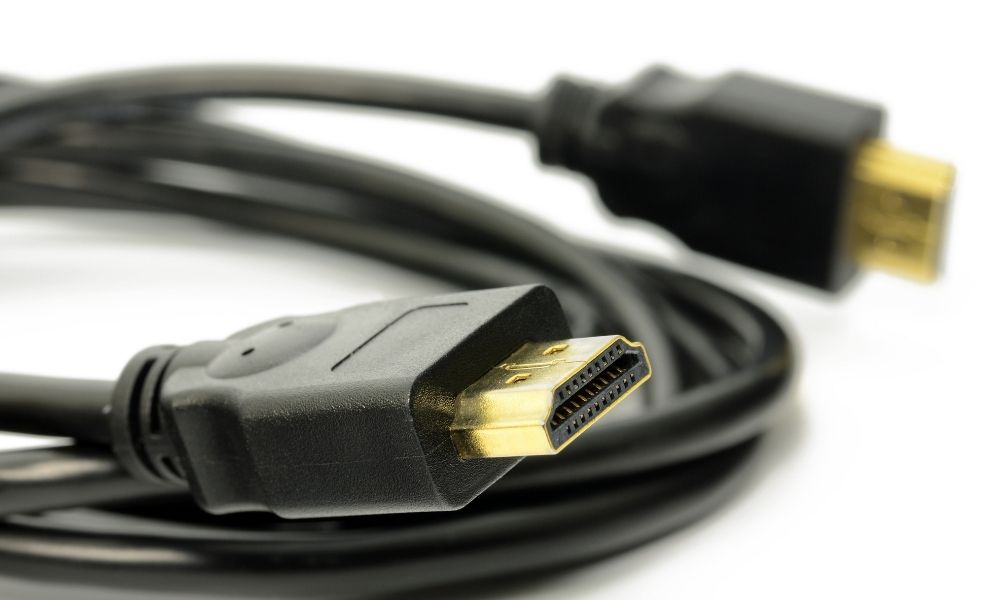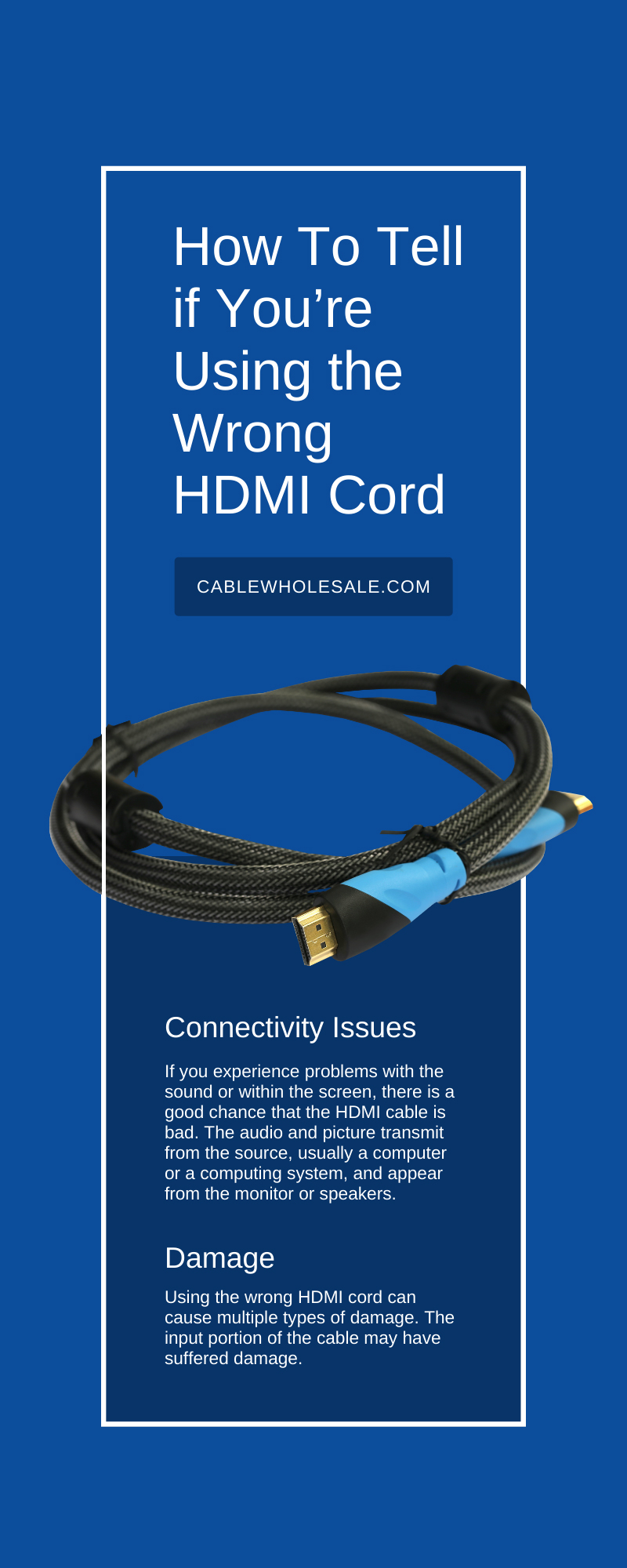
The modern world’s technology relies on different cords and cables to allow machines to function and activate certain features. HDMI cords have become a regular piece of technology connecting our monitors, TVs, and laptops to other devices that allow us to see and hear certain things in pictures and video. Unfortunately, there are times when these cords don’t function. Luckily, there are ways to tell if you are using the wrong HDMI cord.
How Does an HDMI Cable Work?
An HDMI cable is a cord that connects two pieces of technology to transfer electric pulses or signals between them. The signals transmitted contain high quantities of pixels that will emit high-quality pictures on a screen. The sound is also transferrable through these cables, making them an optimal choice for most of today’s technology.
Originally, TVs had low picture quality and needed fewer pixels to show an image on the screen. However, people wanted more from the quality of their television, so TVs eventually upgraded, and HDTVs came into the modern world. These newer televisions are digital, which means they need many pixels to generate a clear picture from a source that would pump out more energy, such as a cable box. So to connect the two, the HDMI cable came to be.
HDMI is an acronym that stands for High-Definition Multimedia Interface and works with multiple devices that require large amounts of pixels. The cable allows data transfer from one place to another without the data degrading or falling apart during the relocation to the specific location and keeping it secure. This security has allowed a standard 1080 pixels and eight audio channels to transfer within a single cord.
What Causes a Bad HDMI?
Like any form of technology, an HDMI cord is damageable from outside sources. Knowing what causes them to go bad will let you know how to tell if you’re using the wrong HDMI cord.
Damage to the cord will occur if you bend the cable irregularly or wrap it around an object forcefully. Any cuts along it may have split a wire and led to its malfunction or inoperability. The input pins on the input end may receive damage from bending, so the data will not have the chance to transfer into the port.
Any of these damages are possible and will lead to your HDMI malfunctioning. The cable has the capabilities to sustain some damage, but you should still take proper care of it.
Connectivity Issues
If you experience problems with the sound or within the screen, there is a good chance that the HDMI cable is bad. The audio and picture transmit from the source, usually a computer or a computing system, and appear from the monitor or speakers. If either of these seems glitched or lacking in quality, this is a common sign of how to tell if you’re using the wrong HDMI cord.
Picture
We use monitors and TV screens to show an image or video. If the picture quality is terrible, then that means the number of pixels that were supposed to transfer did not, and the images on the screen are lacking. Spotty images are a common sign, where the pictures have dark or light spots that shouldn’t appear. Or, if the screen has static in different amounts or quantities, the flow of data from the source to the monitor is not consistent, and the cable is malfunctioning continuously.
Sound
The audio that flows through the cable in channels needs to maintain a steady flow to ensure no popping or static noises in the sound quality. When audio glitches occur, there are fluctuations and spikes in the sound that cause strange noises, letting you know that something has damaged the HDMI cable. The sound may also dampen or increase suddenly and cause loud noises or muted voices.
Controls
If specific commands or controls on a terminal meant to send signals to a device don’t respond, the cord may be wrong. A properly functioning HDMI should send alerts to the digital device and cause it to perform tasks based on commands from a controller or button. However, when there is no response, there is most likely a problem with the cable connecting the devices.
Older HDMIs With New Technology
As technology advances, the cords that connect them must also evolve. A possible way to tell that you have the wrong HDMI is by using the new technology. The HDMI cable may be old and incompatible with these devices, so you need a newer HDMI, such as the HDMI 2.1 cable.
Effects on the Machines
Using a lousy HDMI cord will damage the machine it plugs into or connect devices. Make sure that the damaged HDMI cord does not remain in the device for long since the flow of faulty data may cause permanent damage.
Damage
Using the wrong HDMI cord can cause multiple types of damage. As mentioned at the beginning, the input portion of the cable may have suffered damage. The pins may have become bent or crooked, which will cause the data placed into the device to not transfer accurately, corrupting the way the device receives data.
The broken pins may cause damage to the input port as well. Devices with damaged input ports will not receive data from an HDMI cord, and the repairs to fix it are more complicated and expensive. Therefore, it’s essential to keep the cord in its best condition.
Make Sure the Ports Aren’t the Problem
It’s essential to keep in mind the possibility that the ports may be the problem and not the HDMI cord. Make sure your ports are clean and have no visible damage before assuming the cord is the primary problem. Unfortunately, a broken port doesn’t work any better than a broken cord. Also, if you need to use an HDMI cord adapter, there may be an issue with the adapter that causes connectivity issues between the HDMI and the device.
The wrong HDMI cord will cause numerous problems to the devices it connects to. However, these problems are preventable if you know how to identify a bad cable.




